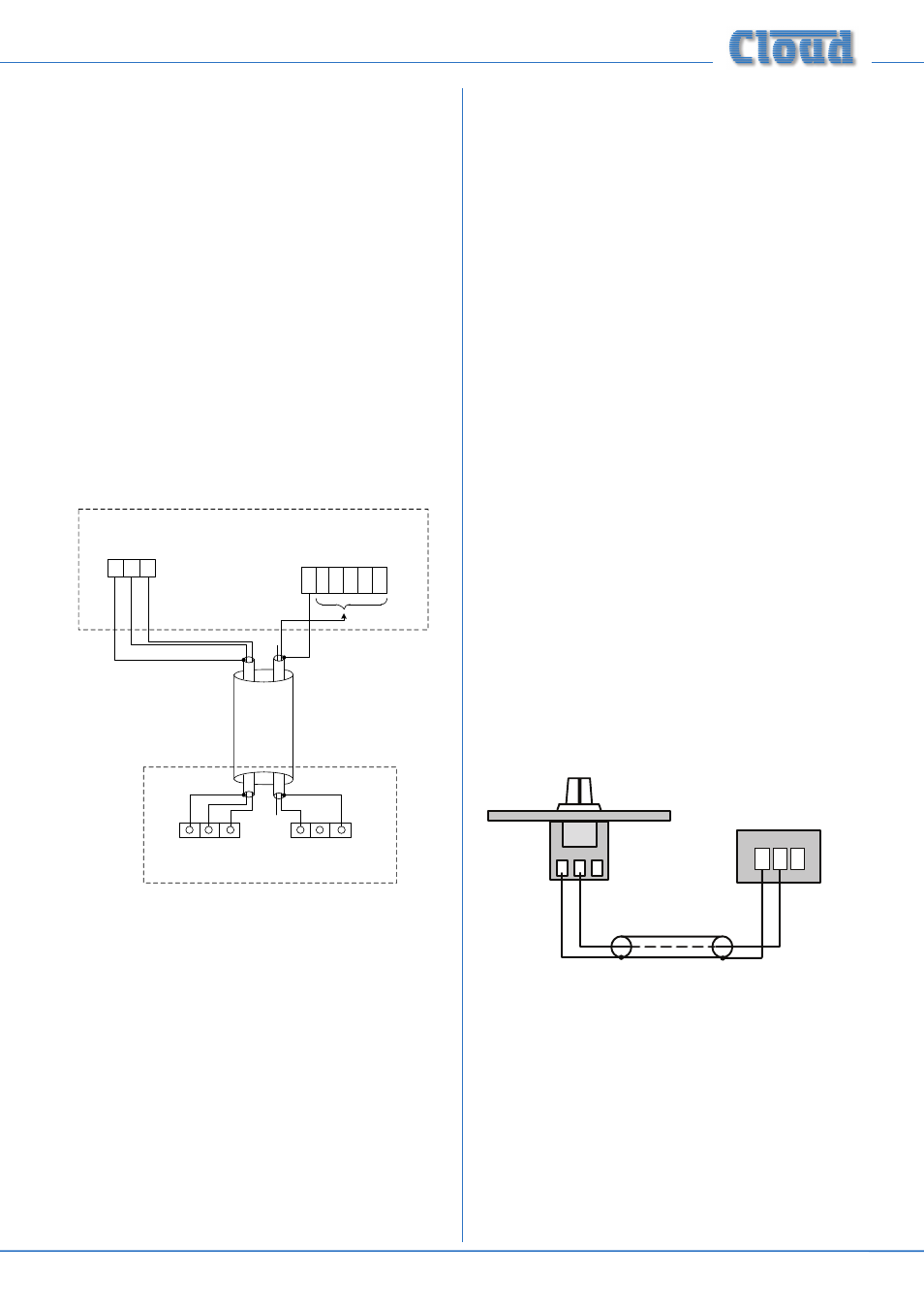Music control – Cloud Electronics 46-50 User Manual
Page 15

46-50 Installation and User Guide V1.0
15
Connecting a PM1 paging mic
The PM 1 is a simple, passive paging microphone suitable for
situations where announcements are always made to the
same zone(s). It can be connected directly to the 46-50 Mixer
Amplifier, the control cable being wired to the pin(s) of the
PAGING ACCESS port corresponding to the zone(s) in
which announcements are required. Any or all of the zones
may be paralleled if multiple zones need to operate from the
PM1.
Either a single 2-pair individually-screened cable may be
used (this gives the neatest finish), or two separate standard
microphone cables. Connections on the PM1 are made via the
rear cable gland in the base and the screw terminal blocks on
the internal PCB (U2 and U3). Full connection details can be
found in the PM1 Installation and User Guide. Note that the
PM1 does not require DC power.
The diagram below shows the connections between a PM1
and a 46-50. Use of 2-pair cable is assumed; the same wiring
principle is adopted if separate cables are being used for audio
and control.
PAGING MIC INPUT
SCN COLD HOT
N/O N/C GND
U2 AUDIO
U3 ACCESS
ZONE ACCESS CONNECTOR
CONNECT TO
ZONE(S) IN USE
1 2 3
0V Z1 Z2 Z3 Z4 +V
46-50
PM1
Note that the default factory setting routes
MIC 1 to all
four zones at all times. In order for
MIC 1 to function
correctly with a paging mic, internal jumpers J23 (Zone 1),
J22 (Zone 2), J21 (Zone 3) and J20 (Zone 4) should be
removed to enable the
PAGING ACCESS connector.
See page 24 for jumper locations.
For automatic music ducking during an announcement,
internal jumper J12 must be in its ‘ON’ position.
See page 19 for further information.
Connecting OEM paging microphones
Other manufacturers’ paging microphones may be used
with the 46-50, provided they make the microphone signal
available at a suitable level (the 46-50’s mic gain adjustment
range should be sufficient to accommodate most types), and
that paging zone selection is by simple “contact closure-to-
ground”. Providing these conditions are met, the connection
method described above for a Cloud PM4, or for the PM1 in
the case of a single-zone mic, may be used.
Music control
Like many other Cloud products, the 46-50 allows remote
control of music level and source selection in each of the
primary zones. Cloud remote control plates from the RL-1
Series (music level only) and RSL-6 Series (music level and
source selection) provide an elegant solution, though control
via a DC voltage from third-party systems is also possible
(see page 21).
Both types of plate connect via the
REMOTE MUSIC
CONTROL connectors for the relevant zone (see [8] on
page 12). These connectors are 3-pin 5 mm-pitch screw
terminal type; please refer to page 21 for additional
information regarding cable lengths, etc.
Connecting an RL-1 Series remote control plate
Wire the remote control plate as shown below. Either
single-core screened or twin-and-screen cable may be used;
in the case of the latter, ignore one of the cores. Maximum
reliable cable run is 100 m
1
2 3
REMOTE
SOURCE + LEVEL
1 2 3
REMOTE LEVEL CONTROL WIRING
RL-1
SINGLE-CORE SCREENED CABLE MAY BE USED
Before the RL-1 will operate, the zone’s Music Control Port
must be enabled by setting the adjacent push-button switch
([9] on page 12) to REMOTE (i.e., pressing it in). In this
setting, the zone’s front panel
MUSIC LEVEL and SOURCE
controls become inoperative. As music source selection will
still be required from the mixer amplifier’s front panel when
an RL-1 is in use, the REMOTE setting may be overridden for
the source selection control only by moving internal jumper
J3 (Zone 1), J4 (Zone 2), J5 (Zone 3) or J6 (Zone 4) on the
main internal PCB. See page 24 for location of internal
jumpers.
